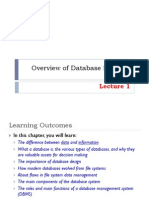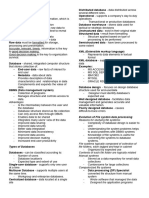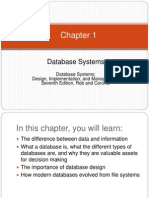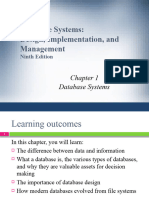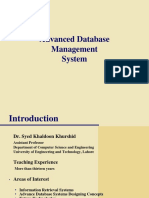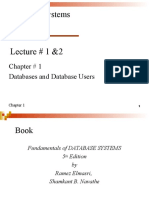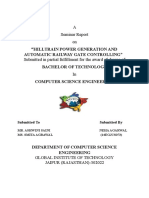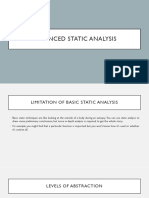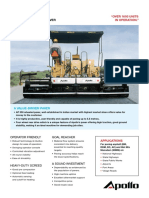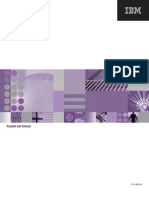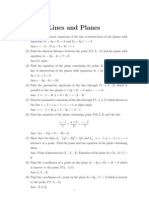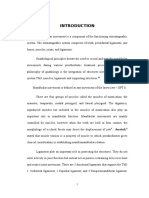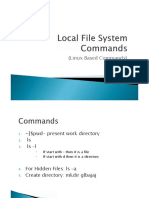IN3193
Database
Management
Instructor
Dr. Muhammad Waqar
muhammad.aslam@purescollege.ca
Contents
01 Basics of MS Access
Creating, Searching and Maintaining Database
Using Tables
02 Reports, Forms, Queries
Creating reports and forms, Multi-table forms,
Queries
03 Structured Query Language
SQL and MS Access, The relational model,
MySQL
04 Joins and Table
Manipulation in MySQL
Joins, Insertion, Updating, Deleting data
1
� 3
Break up
Week Week Tests Week
1-2 3-6 7-9
Week 4
Creating
Creating, Assignment I
reports and
Searching (15%)
forms, Multi- MySQL
and table forms, Introduction
Maintaining Macros, Week 6 and Basics
Database Pivot tables Mid Term
Using Tables and forms (30%)
Break up
Week Week Week
Tests
10-11 12 13
The MySQL Data Week 10
Assignment Final Exam
relational Manipulation (30%)
model, Joins (15%)
2
� Grading Scheme
Test Percentage
Attendance/Class Participation 10%
Assignments (2-3) 30%
Mid Term 30%
Final Exam 30%
Total 100%
Easy to change colors.
Grading
Marks Point Meaning
A (80-100%) 4 EXCELLENT: Outstanding performance
B (70-79%) 3 GOOD: Better than average achievement
C (60-69%) 2 SATISFACTORY: Achievement sufficient to enable
the student to progress in the course
D (50-59%) 1 MARGINAL: Minimum acceptable level of
achievement; Exception: for courses where the
passing grade is a “C”, a grade of “D” represents an
insufficient achievement; must repeat.
F (0-49%) 0 UNSATISFACTORY: Insufficient achievement; must
repeat. Student must consult with Program
Coordinator.
The passing percentage for this course is 60% (Grade C, Point 2)
3
� 7
Textbooks
1. Microsoft Office Access ™ 2013: Comprehensive
TestsConcepts & Techniques Gary B.
Shelly, Thomas J. Cashman, Philip J. Pratt, Mary Z. Last
2. Murach’s MySQL by Joel Murach.
Google Class Room
• It will be used for sharing all the materials and any announcements
related to this course
• Please see your google class room code written at the bottom and
use it to join google class room.
• Please use your college email address for joining class and also for
any correspondence.
• t
4
� Database Systems:
Design, Implementation, and
Management
Database Systems
Objectives
In this chapter, you will learn:
• The difference between data and information
• What a database is, the various types of
databases, and why they are valuable assets
for decision making
• The importance of database design
• How modern databases evolved from file
systems
10
10
5
� Objectives (cont’d.)
• About flaws in file system data management
• The main components of the database system
• The main functions of a database management
system (DBMS)
11
11
Introduction
• Good decisions require good information
derived from raw facts
• Data is managed most efficiently when stored
in a database
• Databases evolved from computer file systems
• Understanding file system characteristics is
important
12
12
6
� Why Databases?
• Databases solve many of the problems
encountered in data management
– Used in almost all modern settings involving
data management:
• Business
• Research
• Administration
• Important to understand how databases work
and interact with other applications
13
13
Data vs. Information
• Data are raw facts
• Information is the result of processing raw data
to reveal meaning
• Information requires context to reveal meaning
• Raw data must be formatted for storage,
processing, and presentation
• Data are the foundation of information, which is
the bedrock of knowledge
14
14
7
� Data vs. Information (cont’d.)
• Data: building blocks of information
• Information produced by processing data
• Information used to reveal meaning in data
• Accurate, relevant, timely information is the key
to good decision making
• Good decision making is the key to
organizational survival
• Data management: focuses on proper
generation, storage, and retrieval of data
15
15
Introducing the Database
• Database: shared, integrated computer
structure that stores a collection of:
– End-user data: raw facts of interest to end user
– Metadata: data about data
• Provides description of data characteristics and
relationships in data
• Complements and expands value of data
• Database management system (DBMS):
collection of programs
– Manages structure and controls access to data
16
16
8
� Role and Advantages of the DBMS
• DBMS is the intermediary between the user
and the database
– Database structure stored as file collection
– Can only access files through the DBMS
• DBMS enables data to be shared
• DBMS integrates many users’ views of the data
17
17
18
18
9
� Role and Advantages of the DBMS
(cont’d.)
• Advantages of a DBMS:
– Improved data sharing
– Improved data security
– Better data integration
– Minimized data inconsistency
– Improved data access
– Improved decision making
– Increased end-user productivity
19
19
Types of Databases
• Databases can be classified according to:
– Number of users
– Database location(s)
– Expected type and extent of use
• Single-user database supports only one user at
a time
– Desktop database: single-user; runs on PC
• Multiuser database supports multiple users at
the same time
– Workgroup and enterprise databases
20
20
10
� Types of Databases (cont’d.)
• Centralized database: data located at a single
site
• Distributed database: data distributed across
several different sites
• Operational database: supports a company’s
day-to-day operations
– Transactional or production database
• Analytical Databases
• Data warehouse: stores data used for tactical
or strategic decisions 21
21
Types of Databases (cont'd.)
• Unstructured data exist in their original state
• Structured data result from formatting
– Structure applied based on type of processing to
be performed
• Semistructured data have been processed to
some extent
• Extensible Markup Language (XML) represents
data elements in textual format
– XML database supports semistructured XML
data
22
22
11
� 3 Vendor offers single-user/personal DBMS version
23
23
Why Database Design Is Important
• Database design focuses on design of
database structure used for end-user data
– Designer must identify database’s expected use
• Well-designed database:
– Facilitates data management
– Generates accurate and valuable information
• Poorly designed database:
– Causes difficult-to-trace errors
24
24
12
� Evolution of File System Data
Processing
• Reasons for studying file systems:
– Complexity of database design is easier to
understand
– Understanding file system problems helps to
avoid problems with DBMS systems
– Knowledge of file system is useful for converting
file system to database system
• File systems typically composed of collection of
file folders, each tagged and kept in cabinet
– Organized by expected use
25
25
Evolution of File System Data
Processing (cont'd.)
• Contents of each file folder are logically related
• Manual file systems
– Served as a data repository for small data
collections
– Cumbersome for large collections
• Computerized file systems
– Data processing (DP) specialist converted
computer file structure from manual system
• Wrote software that managed the data
• Designed the application programs
26
26
13
� Evolution of File System Data
Processing (cont'd.)
• Initially, computer file systems resembled
manual systems
• As number of files increased, file systems
evolved
– Each file used its own application program to
store, retrieve, and modify data
– Each file was owned by individual or department
that commissioned its creation
27
27
28
28
14
� 29
29
30
30
15
� File System Redux: Modern End-User
Productivity Tools
• Ubiquitous use of personal productivity tools
can introduce the same problems as the old file
systems
• Microsoft Excel
– Widely used by business users
– Users have become so adept at working with
spreadsheets, they tend to use them to
complete tasks for which spreadsheets are not
appropriate – database substitute
31
31
Problems with File System Data
Processing
• File systems were an improvement over
manual system
– File systems used for more than two decades
– Understanding the shortcomings of file systems
aids in development of modern databases
– Many problems not unique to file systems
• Even simple file system retrieval task required
extensive programming
– Ad hoc queries impossible
– Changing existing structure difficult
32
32
16
� Problems with File System Data
Processing (cont'd.)
• Security features difficult to program
– Often omitted in file system environments
• Summary of file system limitations:
– Requires extensive programming
– Cannot perform ad hoc queries
– System administration is complex and difficult
– Difficult to make changes to existing structures
– Security features are likely to be inadequate
33
33
Structural and Data Dependence
• Structural dependence: access to a file is
dependent on its own structure
– All file system programs must be modified to
conform to a new file structure
• Structural independence: change file structure
without affecting data access
• Data dependence: data access changes when
data storage characteristics change
• Data independence: data storage
characteristics do not affect data access
34
34
17
� Structural and Data Dependence
(cont'd.)
• Practical significance of data dependence is
difference between logical and physical format
• Logical data format: how human views the data
• Physical data format: how computer must work
with data
• Each program must contain:
– Lines specifying opening of specific file type
– Record specification
– Field definitions
35
35
Data Redundancy
• File system structure makes it difficult to
combine data from multiple sources
– Vulnerable to security breaches
• Organizational structure promotes storage of
same data in different locations
– Islands of information
• Data stored in different locations is unlikely to
be updated consistently
• Data redundancy: same data stored
unnecessarily in different places
36
36
18
� Data Redundancy (cont'd.)
• Data inconsistency: different and conflicting
versions of same data occur at different places
• Data anomalies: abnormalities when all changes in
redundant data are not made correctly
– Update anomalies: An agent has a new phone
number, it must be changed in all records of that
agent
– Insertion anomalies: A new agent would have to be
entered with a dummy customer
– Deletion anomalies: Deleting a customer may delete
the only record of an agent
37
37
Lack of Design and Data-Modeling
Skills
• Most users lack the skill to properly design
databases
– Despite multiple personal productivity tools
being available
• Data-modeling skills
– Vital in the data design process
• Good data modeling facilitates communication
between the designer, user, and the developer
38
38
19
� Database Systems
• Database system consists of logically related
data stored in a single logical data repository
– May be physically distributed among multiple
storage facilities
– DBMS eliminates most of file system’s problems
– Current generation stores data structures,
relationships between structures, and access
paths
• Also defines, stores, and manages all access
paths and components
39
39
40
40
20
� The Database System Environment
• Database system: defines and regulates the
collection, storage, management, use of data
• Five major parts of a database system:
– Hardware
– Software
– People
– Procedures
– Data
41
41
42
42
21
� The Database System Environment
(cont'd.)
• Hardware: all the system’s physical devices
• Software: three types of software required
– Operating system software
– DBMS software
– Application programs and utility software
43
43
The Database System Environment
(cont'd.)
• People: all users of the database system
– System and database administrators
– Database designers
– Systems analysts and programmers
– End users
• Procedures: instructions and rules that govern
the design and use of the database system
• Data: the collection of facts stored in the
database
44
44
22
� The Database System Environment
(cont'd.)
• Database systems are created and managed at
different levels of complexity
• Database solutions must be cost-effective as
well as tactically and strategically effective
• Database technology already in use affects
selection of a database system
45
45
DBMS Functions
• Most functions are transparent to end users
– Can only be achieved through the DBMS
• Data dictionary management
– DBMS stores definitions of data elements and
relationships (metadata) in a data dictionary
– DBMS looks up required data component
structures and relationships
– Changes automatically recorded in the dictionary
– DBMS provides data abstraction and removes
structural and data dependency
46
46
23
� 47
47
DBMS Functions (cont'd.)
• Data storage management
– DBMS creates and manages complex structures
required for data storage
– Also stores related data entry forms, screen
definitions, report definitions, etc.
– Performance tuning: activities that make the
database perform more efficiently
– DBMS stores the database in multiple physical
data files
48
48
24
� 49
49
DBMS Functions (cont'd.)
• Data transformation and presentation
– DBMS transforms data entered to conform to
required data structures
– DBMS transforms physically retrieved data to
conform to user’s logical expectations
• Security management
– DBMS creates a security system that enforces
user security and data privacy
– Security rules determine which users can access
the database, which items can be accessed, etc.
50
50
25
� DBMS Functions (cont'd.)
• Multiuser access control
– DBMS uses sophisticated algorithms to ensure
concurrent access does not affect integrity
• Backup and recovery management
– DBMS provides backup and data recovery to
ensure data safety and integrity
– Recovery management deals with recovery of
database after a failure
• Critical to preserving database’s integrity
51
51
DBMS Functions (cont'd.)
• Data integrity management
– DBMS promotes and enforces integrity rules
• Minimizes redundancy
• Maximizes consistency
– Data relationships stored in data dictionary used
to enforce data integrity
– Integrity is especially important in transaction-
oriented database systems
52
52
26
� DBMS Functions (cont'd.)
• Database access languages and application
programming interfaces
– DBMS provides access through a query
language
– Query language is a nonprocedural language
– Structured Query Language (SQL) is the de
facto query language
• Standard supported by majority of DBMS vendors
53
53
DBMS Functions (cont'd.)
• Database communication interfaces
– Current DBMSs accept end-user requests via
multiple different network environments
– Communications accomplished in several ways:
• End users generate answers to queries by filling
in screen forms through Web browser
• DBMS automatically publishes predefined reports
on a Web site
• DBMS connects to third-party systems to
distribute information via e-mail
54
54
27
� Managing the Database System:
A Shift in Focus
• Database system provides a framework in
which strict procedures and standards enforced
– Role of human changes from programming to
managing organization’s resources
• Database system enables more sophisticated
use of the data
• Data structures created within the database
and their relationships determine effectiveness
55
55
Managing the Database System:
A Shift in Focus (cont'd.)
• Disadvantages of database systems:
– Increased costs
– Management complexity
– Maintaining currency
– Vendor dependence
– Frequent upgrade/replacement cycles
56
56
28
� Preparing for Your Database
Professional Career
57
57
Summary
• Data are raw facts
• Information is the result of processing data to
reveal its meaning
• Accurate, relevant, and timely information is the
key to good decision making
• Data are usually stored in a database
• DBMS implements a database and manages its
contents
58
58
29
� Summary (cont'd.)
• Metadata is data about data
• Database design defines the database
structure
– Well-designed database facilitates data
management and generates valuable
information
– Poorly designed database leads to bad decision
making and organizational failure
• Databases evolved from manual and
computerized file systems
59
59
Summary (cont'd.)
• In a file system, data stored in independent files
– Each requires its own management program
• Some limitations of file system data
management:
– Requires extensive programming
– System administration is complex and difficult
– Changing existing structures is difficult
– Security features are likely inadequate
– Independent files tend to contain redundant data
• Structural and data dependency problems
60
60
30
� Summary (cont'd.)
• Database management systems were
developed to address file system’s inherent
weaknesses
• DBMS present database to end user as single
repository
– Promotes data sharing
– Eliminates islands of information
• DBMS enforces data integrity, eliminates
redundancy, and promotes security
61
61
31





